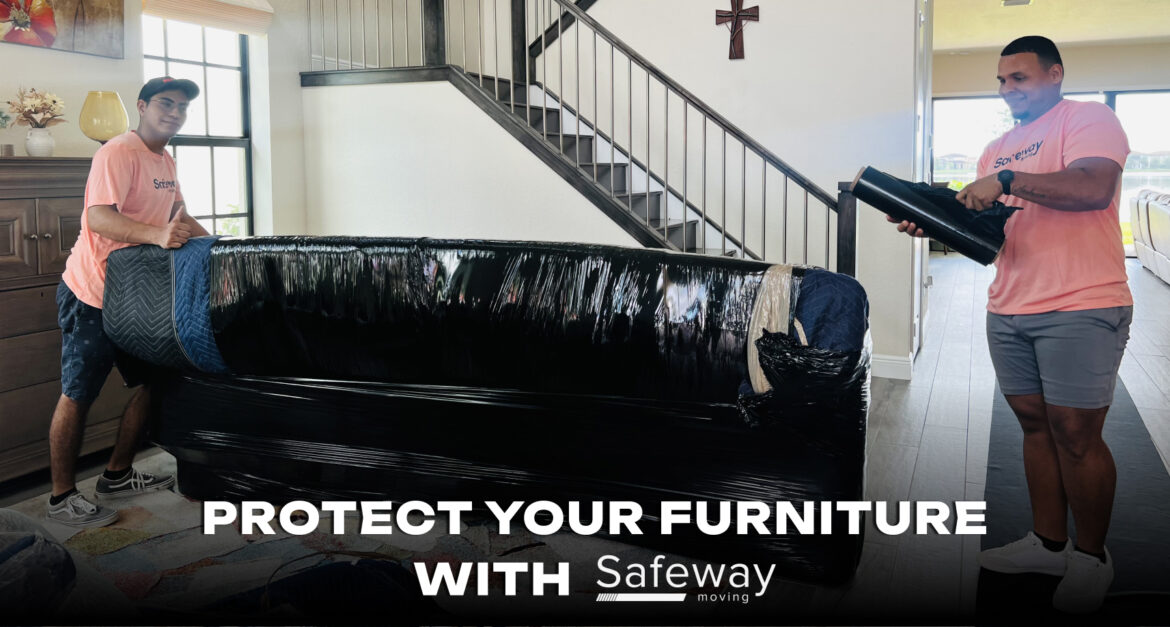
When planning a move, most people focus on logistics, packing, and transportation. However, one crucial aspect often overlooked is protecting furniture during the process. Furniture is not only valuable but often holds sentimental value. Whether you’re relocating across the city or moving long distance, ensuring your items arrive undamaged should be a top priority.
Without proper precautions, scratches, dents, and breakages can happen during loading, transportation, or even while unloading. Luckily, with a little planning and the right materials, you can greatly reduce the risk of damage. This guide explores in-depth how to protect your furniture when moving, including tools, materials, techniques, and professional support options.
Start with a Solid Plan: Preparing Your Furniture for the Move
Before wrapping anything, take time to assess each furniture item. Evaluate which pieces are most fragile, which can be disassembled, and which require special handling. A strong plan can help you avoid costly mistakes and unnecessary damage.
- Create a Moving Inventory: Write down every large item you plan to move. Note whether it is fragile, can be disassembled, or has sharp corners. This helps prioritize protection steps and allocate the right materials.
- Clean Everything First: Dust and dirt can scratch surfaces during the move. Wipe down wood, glass, and upholstery before packing. Clean furniture is easier to wrap and less likely to suffer abrasions.
Key Tip: Safeway Moving provides pre-move consultation services, where professional movers help assess your furniture and recommend the safest way to transport it.
Must-Have Packing Materials for Furniture Protection
Investing in the right materials can make all the difference. Though it may seem costly upfront, the long-term savings are clear when compared to the price of repairing or replacing furniture.
Essential Supplies:
- Furniture blankets and pads: Thick, quilted blankets protect against dings and dents.
- Stretch wrap: Holds blankets in place and prevents scratches.
- Bubble wrap: Best for fragile or delicate features like glass doors or legs.
- Packing tape and zip ties: Secure wrapping materials without leaving residue.
- Corner protectors: Ideal for desks, tables, and mirrors.
Average Costs of Furniture Protection Materials:
Material | Approximate Cost (per unit) |
Furniture Pads | $8 – $12 each |
Stretch Wrap Roll | $15 – $20 |
Bubble Wrap (large) | $25 – $35 per roll |
Corner Protectors | $10 – $15 for a pack of 4 |
Heavy-duty Tape | $5 – $7 per roll |
Pro Tip: Safeway Moving offers complete packing solutions, including furniture wrapping, padding, and boxing as part of their full-service packages.
Disassemble When Possible: Save Space and Reduce Risk
Taking apart larger furniture items may seem like a chore, but it often prevents damage and makes items easier to transport. Bed frames, dining tables, and modular sofas are common candidates.
- Remove Legs and Hardware: Unscrew legs from tables and sofas to prevent snapping or scratching walls. Store all screws, bolts, and nuts in labeled plastic bags taped to the item.
- Detach Cushions and Shelves: Wrap separately in stretch film or packing paper to avoid unnecessary bulk and potential damage.
Why This Matters: Smaller, disassembled items are easier to wrap, fit snugly in the truck, and reduce the chance of breakage due to stress during movement.
Use the Right Wrapping Techniques: Step-by-Step Guide
Even with the best materials, poor wrapping can lead to furniture damage. Wrap your furniture like you’re gift-wrapping something precious, because you are.
- Wrap in Layers: Start with a layer of bubble wrap or padding, followed by a secure outer layer of stretch wrap or moving blankets. Tape or tie it tightly but not too tight to avoid pressure damage.
- Pay Special Attention to Corners: Corners are often first to hit walls or doors. Use foam or cardboard protectors before applying padding.
- Cover Glass Separately: Glass shelves and doors should be removed and wrapped individually with bubble wrap and cardboard.
Expert Advice: Safeway Moving’s crew is trained in advanced wrapping techniques to protect your furniture as if it were their own.
Secure Furniture During Transport: Load Like a Pro
Protecting your furniture doesn’t stop at wrapping. The way your belongings are loaded into the truck also plays a major role in preventing damage.
- Heaviest Items Go First: Start with the bulkiest items and secure them against the walls of the truck. This provides a stable base.
- Use Tie-Down Straps: Fasten items tightly to prevent shifting while the vehicle is in motion.
- Fill Gaps Strategically: Use cushions, blankets, or smaller boxes to fill empty spaces and keep furniture from moving.
Tip: Safeway Moving uses air-ride suspension trucks and professional-grade tie-down systems to minimize jostling during transit.
Hidden Costs of Furniture Damage: Why Protection Pays Off
While skimping on protective materials might seem like a way to save money, damaged furniture often leads to unexpected repair or replacement costs.
Damage Type | Average Repair Cost |
Upholstery Tear | $50 – $150 per item |
Wooden Scratch | $75 – $300 depending on size |
Broken Legs | $100 – $250 each |
Shattered Glass | $150 – $500 per piece |
Financial Implications:
- Insurance Limitations: Basic mover’s insurance often doesn’t cover the full cost of repairs or replacements.
- Out-of-Pocket Repairs: If your furniture isn’t properly protected, you may end up spending hundreds after the move.
- Sentimental Loss: Not all damage can be measured in dollars. Family heirlooms or custom pieces might be irreplaceable.
Reminder: Safeway Moving offers additional valuation protection plans to give you peace of mind.
Conclusion: Furniture Safety Begins with Smart Moving Choices
Protecting your furniture during a move is not just a luxury, it’s a necessity. With the right planning, materials, and techniques, you can avoid costly mistakes and ensure that your valuable items arrive in perfect condition.
Safeway Moving is committed to providing reliable and comprehensive moving solutions, including expert furniture protection, disassembly, wrapping, and secured transportation. Trust your move to professionals who care.
The best way to protect wooden furniture is by using a combination of furniture blankets and stretch wrap. Begin by wrapping the item in a thick moving blanket to prevent scratches and then secure it with stretch wrap to keep it in place. Avoid placing tape directly on wood surfaces as it may damage the finish.
Yes, soft household items like towels, blankets, or sheets can provide a layer of protection, especially for smaller moves. However, for long-distance relocations or valuable items, it’s best to use professional-grade materials like bubble wrap and furniture pads for maximum safety.
Disassembling furniture reduces the risk of breakage and makes handling easier. Remove legs from tables, detach bed frames, and take out drawers or shelves. Store all hardware in labeled bags and tape them to the furniture to avoid losing parts.










